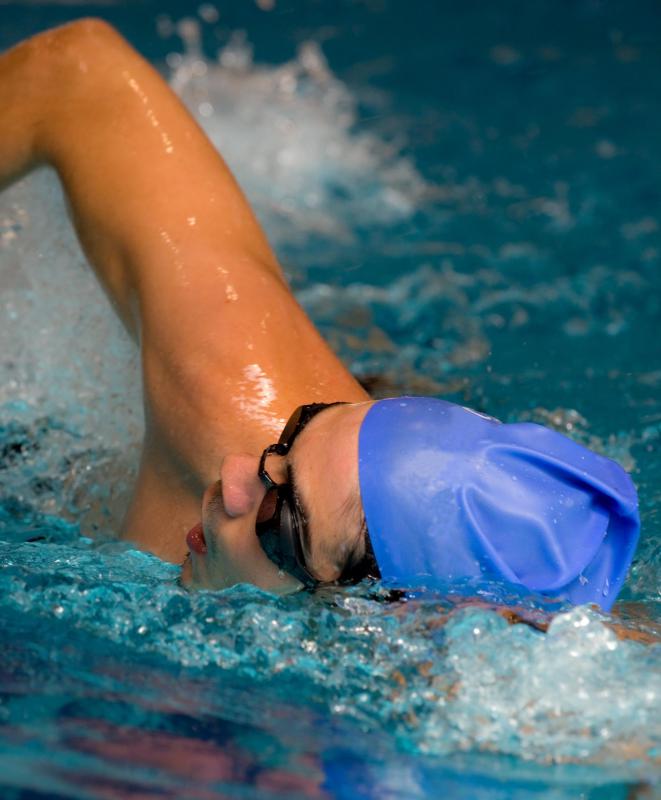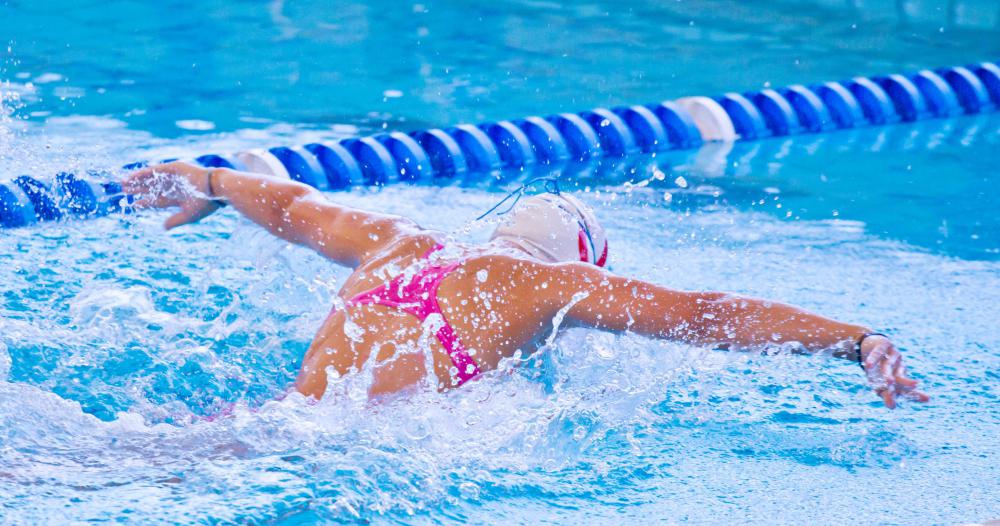At TheHealthBoard, we're committed to delivering accurate, trustworthy information. Our expert-authored content is rigorously fact-checked and sourced from credible authorities. Discover how we uphold the highest standards in providing you with reliable knowledge.
What are the Benefits of Swimming Laps?
Swimming laps can be an effective means of exercise that can strengthen muscles as well as help a person regulate his or her breathing, strengthen his or her lungs, and even relax after a different type of workout. As long as proper safety precautions are taken, swimming is a safe, relaxing way to burn calories and get an excellent aerobic workout. It is easily a year-round activity, with indoor heated swimming pools available for winter swimming and outdoor pools allowing for cool, refreshing exercise even on a hot summer day. Swimming laps also allows people of all ages to exercise without the strain of high-impact workouts that can cause injury and place stress on bones.
Pools designed for swimming laps are available at a number of different health clubs and other exercise facilities, though any swimming pool of decent length will work effectively. Professional swimmers may prefer the measured, straight distance of an athletic swimming pool, but for amateurs looking to exercise, any swimming pool should work. Swimming laps should not be done alone, however, as there is the potential for accident or injury, including drowning.

The benefits of swimming laps typically include muscle strengthening and cardiovascular improvements, such as strengthened lungs with potentially increased air capacity. A lap is typically swum from one end or side of a pool to the other, and then back. The kicking motion of the legs and the strokes of the swimmer’s arms often work muscles throughout his or her entire body, and different strokes can be employed to work different muscle groups. Though swimming laps may not strengthen bones as terrestrial resistance training does, the muscles of a swimmer are often quite strong and developed.

While swimming laps, a face down stroke is often commonly used. During this type of swimming a person will turn his or her head to the side to breathe in, and slowly exhale during swimming. This regulated breathing allows someone swimming laps to refresh the muscles in his or her body with fresh oxygen throughout the workout. Other types of exercise, however, may not stress breathing steadily throughout the routine, and a brief period of swimming after a workout can help reinvigorate sore or tired muscles.

This controlled pattern of breathing can also allow a person to enter a somewhat meditative state. A swimmer can focus only on his or her breathing and the repeated motions of his or her arms and legs. The world may be left behind as the swimmer allows his or her mind to relax and be absorbed by the cool, azure world beneath the water. After this type of swimming, a person can often feel refreshed both physically and mentally.
AS FEATURED ON:
AS FEATURED ON:














Discuss this Article
Post your comments